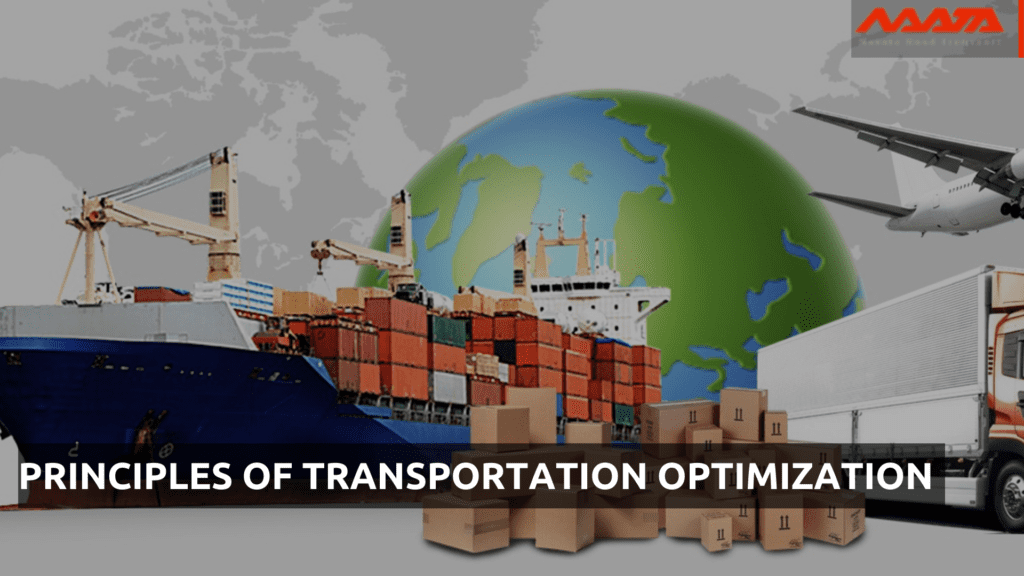Transportation Optimization : Definition, Principle and Driver Shortage Solution
Table of Contents
Defining Transportation Optimization
Sending goods in and out of the company accounts for more than half of the total supply chain expenses in many companies today. Transparency in transportation networks, which have grown over time without being fully optimised, is often the cause of inefficiencies.
Transport costs will grow in the future as global supply chains get more complicated, as volume rises, or as new locations, goods, or markets emerge.
Poor transportation equipment, decentralised decision-making about logistics, an excess of local transport service providers or a single 3PL sourcing are typical causes for transportation optimization. High express shipping and special delivery costs are also common.
It is more probable that a supply chain that is optimised would decrease costs, improve customer happiness, and provide value to all parties involved. Truly optimising involves making all choices and procedures as efficient as possible by using data.
Identifying waste, overlap, and huge quantities requires using transportation metrics to monitor performance and making ongoing improvements as a result. With the use of data, transportation efficiency is becoming more associated with controlled transportation.
You May Also Like To Read: Start Your Transportation Business by following these 9 Savvy Steps

Principles of Transportation Optimization
Companies increasingly see their logistics and transport activities as a competitive differentiator. As a result, there’s an increased need for transportation optimization with sophisticated functionality. Transportation optimization systems expand by double digits in 2011 and by 10 percent annually over the next five years, according to Profressionals.
Businesses are under increasing pressure to reduce costs, solve capacity issues, reduce their carbon footprints, and simplify movements. A flexible, agile, and dynamically extensive transportation management system can support these service objectives.
Finding the best solution may be just as difficult for some businesses as bringing the appropriate goods to market at the correct time and cost. The way manufacturers use — or abuse — the word optimization contributes to the confusion in the search.
For more than a decade, transportation solution providers have bragged about the optimization capabilities of their products in support of more complex processes for planning, executing, and settling. The overwhelming majority of the business value derived from the usage of transportation management systems has been shown to be driven by optimization methods. To be clear, not all optimization methods are created equal, and that’s where the misunderstanding resides.
Vendors tend to concentrate their optimization efforts on a single function, which may have the unintended consequence of doing more damage than good. It is possible that a shipper may choose one carrier over another merely because it is cheaper. Using a thorough strategy may show that the chosen carrier lacks the necessary number of trucks or docks to handle the load from the start.
You May Also Like To Read: 4 Best Transportation Types For Moving Your Goods

Transportation Optimization and The Driver Shortage
To put it another way, optimization is a quantitative and methodical approach to identifying the optimal solution to a given issue by considering all of the possible outcomes under the given conditions. However, in this essay, we will only look at process optimization, specifically in the context of transportation systems design. A minimum or maximum value of an objective function that is subject to restrictions may be generated using optimization techniques.
These characteristics of an intelligent TMS aid in the fight against the lack of qualified drivers:
More lucrative loads are generated as a result of efficient load matching. Taking a look at the load information and where each driver is in relation to it, as well as adding hours of service, helps to assess each driver. There are hundreds of possible loads on the load boards that the system analyses, puts into the driver’s path and evaluates if the driver can carry them. It then calculates the income per mile or per day of the driver. This is done by the system. Based on all of this data, the algorithm then suggests the optimal loads for carriers.
In order to comply with hours-of-service regulations and offer more exact arrival times, smart trip planning creates correct travel plans for drivers. As a result of taking into account available work hours, pickup and delivery time windows, travel times, fuel breaks and rest pauses, the TMS creates an hour-by-hour schedule for the driver to follow. The route and expected arrival time are automatically updated as the drivers go along the road.
Smart driver selection uses hours of service data to match the best drivers with the best loads. A driver’s expertise behind the wheel has to be taken into consideration while hiring. For the driver, the HOS rules must be adjusted to fit the load. After working 11 hours in one day, a driver is not allowed to drive again until the next day and must take at least 8 hours of relaxation. However, if the cargo necessitates a six-hour trip, he has an extra five hours of driving left in the day. Is there anything else you’d want him to work on before his HOS cap expires?
Driver planning aids transportation companies in designing more efficient driver routes by using sophisticated optimization and scheduling techniques. With optimization, your company may cut down on the number of unnecessary miles it drives and make better use of the network capacity it already has. Turn runs may be prioritised so that drivers can return home more often, such as every evening. Getting more kilometres means drivers get more money, which makes them happier and more eager to work. To transport more freight, optimise driver planning to use fewer drivers.
Powered By 360Presence




